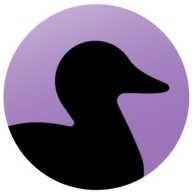

Acunetix and Coverity are both leaders in cybersecurity and software quality. Acunetix is favored for its quick setup and scan capabilities, making it preferable for speed, while Coverity leads with comprehensive analysis, appealing to users needing deeper insights.
Features: Acunetix is known for automated vulnerability detection, ease of use, and swift web app security. Coverity provides extensive code analysis, seamless integration with developer workflows, and focuses on software integrity and compliance.
Room for Improvement: Acunetix could enhance platform integration, expand its vulnerability database, and improve its overall detection capabilities. Coverity users seek more user-friendly reporting, a reduction in false positives, and streamlined outputs.
Ease of Deployment and Customer Service: Acunetix offers smooth deployment and responsive support, benefiting smaller teams. Coverity's deployment is more complex but supported effectively by customer service, making it suitable for large coding structures.
Pricing and ROI: Acunetix is perceived as offering better value for smaller companies with competitive pricing and quick returns. Coverity, though pricier, provides high ROI through robust capabilities, appealing to enterprises seeking comprehensive software assurance.


Acunetix Web Vulnerability Scanner is an automated web application security testing tool that audits your web applications by checking for vulnerabilities like SQL Injection, Cross site scripting, and other exploitable vulnerabilities.
Coverity gives you the speed, ease of use, accuracy, industry standards compliance, and scalability that you need to develop high-quality, secure applications. Coverity identifies critical software quality defects and security vulnerabilities in code as it’s written, early in the development process, when it’s least costly and easiest to fix. With the Code Sight integrated development environment (IDE) plugin, developers get accurate analysis in seconds in their IDE as they code. Precise actionable remediation advice and context-specific eLearning help your developers understand how to fix their prioritized issues quickly, without having to become security experts.
Coverity seamlessly integrates automated security testing into your CI/CD pipelines and supports your existing development tools and workflows. Choose where and how to do your development: on-premises or in the cloud with the Polaris Software Integrity Platform (SaaS), a highly scalable, cloud-based application security platform. Coverity supports more than 20 languages and 200 frameworks and templates.
We monitor all Static Application Security Testing (SAST) reviews to prevent fraudulent reviews and keep review quality high. We do not post reviews by company employees or direct competitors. We validate each review for authenticity via cross-reference with LinkedIn, and personal follow-up with the reviewer when necessary.